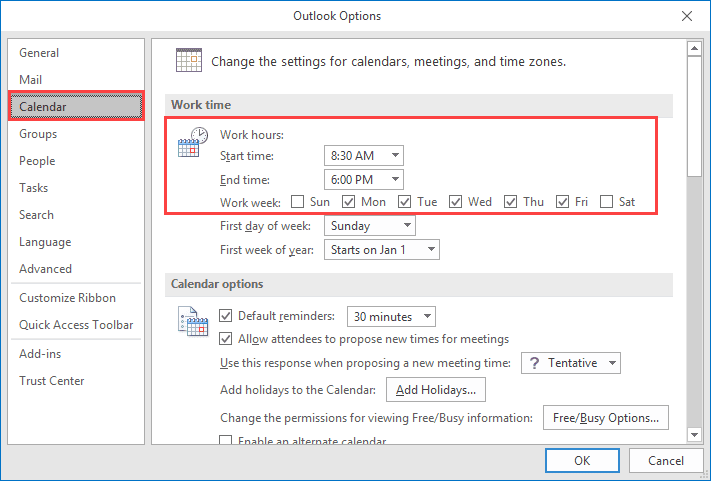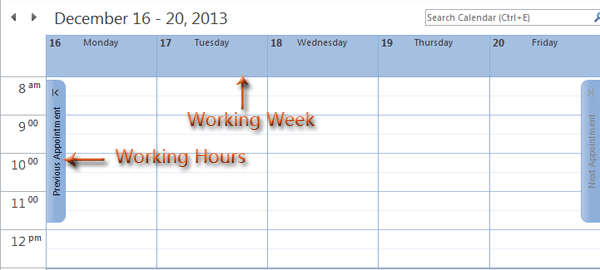

When you open the appointments they appear at the correct time. This issue also affects the view when the time 'falls back' to standard time, but only if the dual time zones are 3 or more hours apart.įortunately Outlook uses GMT and time zone offsets to calculate appointment times and reminders are based off the default time zone, not the secondary zone, so it's unlikely to cause missed appointments (if you use reminders). The entire 24 hour period uses the same offset and the first day in the view determines the offset. This view anomaly occurs because the default is a zone west of the secondary and Outlook takes into consideration that DST goes into effect in the earlier time zone and adjusts the times using the wrong offset. If you use a multi-day view with Sunday as the first day, the Sunday time scale is used, so it appears there is a 4 hour time difference each day. If you view multiple dates and begin with that Sunday, the (incorrect) offset is used on the time scale so it appears Outlook has the times wrong.įor example, if your default time zone is Pacific and Eastern is your secondary time, when Sunday rolls around, the time scale incorrectly displays a 4 hr time difference all day. When you complete your invitation, on the Meeting tab, click Send.When you use dual time zones in Outlook and the default zone is west of the secondary zone, an extra hour is added to the time scale offset for the Sunday DST goes into effect. If you don't see free/busy information in the Scheduling Assistant pane, make sure that your Exchange account is selected on the From pop-up menu at the top of the invitation. The Scheduling button displays the Scheduling Assistant pane at the bottom of the invitation. On the Meeting tab, click Recurrence, and then select a recurrence pattern. On the Meeting menu, click Attachments, and then click Add. Įnter the details about the event, and then do any of the following: If you have a Microsoft Exchange account, to search for rooms in your organization's directory, on the right side of the Location box, click. To choose from a list of recently used rooms, click on the right side of the Location box.

If you don't see free/busy information in the Scheduling Assistant pane, make sure your Exchange account is selected in the From field at the top of the invitation. On the Organizer Meeting tab, click Scheduling.Ĭlicking the Scheduling button displays the Scheduling Assistant pane. See whether your invitees are available (Exchange accounts only) On the Organizer Meeting tab, click Recurrence, and then select a recurrence pattern. On the Meeting menu, click Attachments> Add. On the Organizer Meeting tab, click Time Zones. (See Find a conference room for more information about Room Finder.)Įnter details about the event, and then do any of the following: If you know the meeting room information, type it in the Location box otherwise, click the Room Finder button in the ribbon. In the Subject box, enter a description of the meeting. Select any of the names to see details about that person, including phone number, email address, office location, and more. In the To box, enter the names of people or resources to include for the meeting. To send the invitation from an account that isn't your default account, select an account from the From list. At the bottom of the navigation pane, click Calendar.


 0 kommentar(er)
0 kommentar(er)
